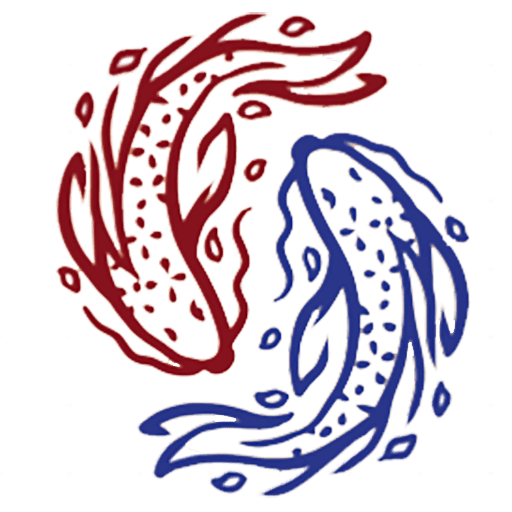This page will contain crucial information about dinosaurs. We’ll start by explaining what dinosaurs are, then talk about how they came to be. In addition, we’ll talk about evolution and the main families of dinosaurs. Finally, we’ll talk briefly about their extinction.
At the bottom of this page, as always, you’ll find a list of all our Dinosaur articles.
What Are Dinosaurs?
Ever since we were little, we’ve always heard about these magnificent creatures, but what are dinosaurs? What makes them so different from today’s species? Many questions arise about these incredible beings.
The word Dinosaur literally means “terrible lizard”. Dinosaurs are directly descended from reptiles, in fact, they are reptiles, but with some peculiarities that make them different. Dinosaurs were terrestrial reptiles that dominated the earth for more than 180 million years, being an extremely successive group in evolutionary terms. From their origins in the Triassic, they diversified enormously in the Cretaceous.
There are more than 1000 extinct species dating back to the Mesozoic era. We’re going to get into some scientific terms that may cause confusion.
However, we’ll try to explain everything as best we can so that there are no doubts. They were the largest animals ever to walk on land.
Definitive characteristics are characters that define a certain group of animals. These characteristics are called synapomorphy. As with many species, dinosaurs had defining characteristics.
Dinosaur Defining Characteristics: Synapomorphies
The defining characteristic of a clade is called a synapomorphies. Some clades have a bunch of defining characteristics, and dinosaurs do have it too.
Some examples of Dinosaur defining characteristics are:

Fig 1.- Perforated Acetabulum (Source: New Creation)
The way in which the femur, the bone that runs from the hip down the leg, our largest bone, connects to the hip is unique in this group. The region of this connection is called the acetabulum. In the case of dinosaurs we can see a hole, called a perforated acetabulum. This is one of the many characteristics that define dinosaurs. There are more complex features that only these organisms possessed.
The biggest example is that the hind limbs are upright under the dinosaur’s body, this is the feature that differentiates them from all reptiles, which normally crawl or have their limbs at the side of their bodies. This is not just a feature of dinosaurs, we mammals have it too. But because of this difference, it was decided to create a specific clade for dinosaurs, placing them in a separate group within reptiles.
Dinosaurs varied in size, from the giant sauropods and the famous T. rex, to the microraptor, with very small species.
They don’t put their whole feet on the ground too, this is a characteristic that almost all the dinosaurs have, including the ones alive. Their walk was similar to cats, that walk only on their digits.
Origin & Evolution of Dinosaurs
Let’s start with a brief introduction to the ages.

Fig. 2- The Eras of Earth (Source: ResearchGate)
The Mesozoic era begins around 252 Million years ago, after a huge mass extinction.
After this extinction and the beginning of this era, in the Triassic period, the first dinosaurs began to appear. They were still simple and undiversified. The first dinosaur recognized today is dated to around 240 Ma to 230 Ma ago.
The Jurassic period was when dinosaurs diversified enormously, and this era is most famous because of the movies. Don’t get it wrong, some of the most famous dinosaurs only appeared on the Cretaceous period, like the T-Rex.
To understand their origins and how they evolved, we need to understand a little about their anatomy, so I’ll try to keep it simple here.

Fig. 3- Representation of Different Skull Types (Source: Unknown)
Anatomy
In the picture above we can see 2 skulls, one of a Synapsid and one of a Diapsid. Synapsids have only 1 fenestra (hole so to speak). Diapsids, on the other hand, have 2 of these, behind the orbit. We can therefore understand that Synapsids represent all currently living mammals, in fact, they are the only representatives with this characteristic.
The clade called Sauropsida is usually used to represent all the reptiles of the present day. Within this clade we can find dinosaurs, birds, turtles, lizards, crocodiles and much more. Lizards, turtles, snakes and crocodiles are not dinosaurs and do not belong to the clade called Dinosauria.
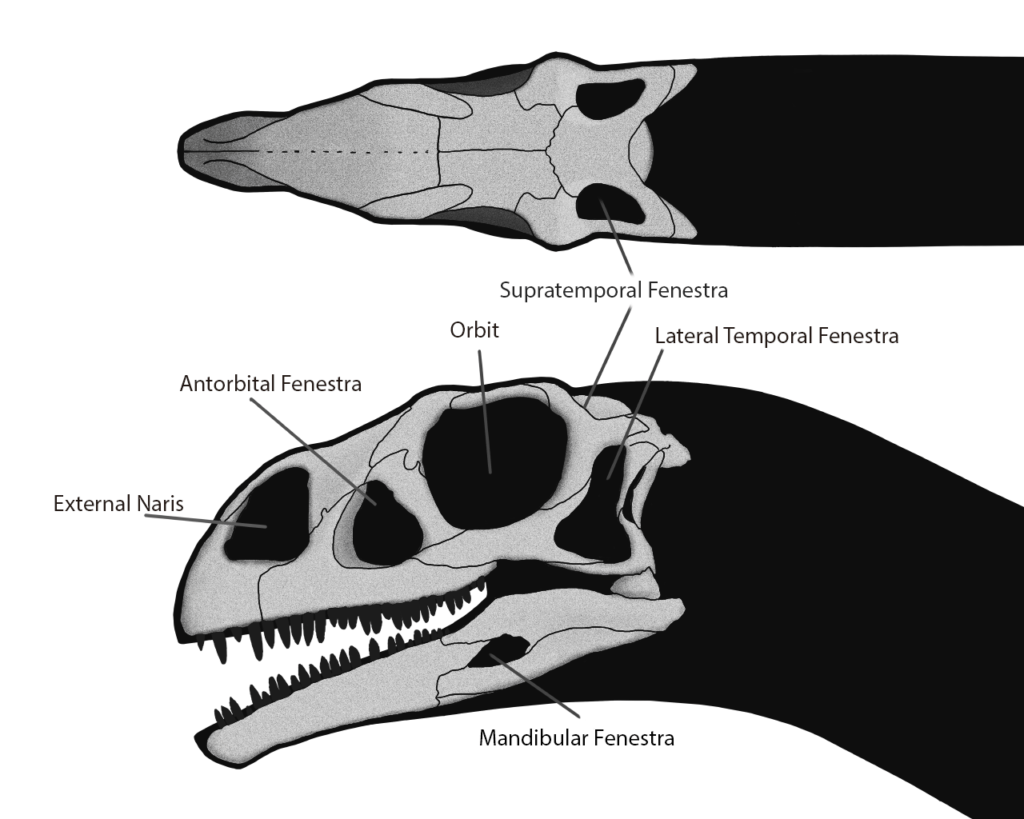
Fig. 4- A Skull of a Dinosaur. We can see a Mandibular Fenestra and an Antorbital Fenestra. (Source: Unknown)
They usually have characteristics such as: A mandibular fenestra and an antorbital fenestra. These spaces in the skull allow for more surrounding musculature, which can cause a greater bite force.
Another characteristic is that these organisms never put their feet directly on the ground, they walked on their digits. Finally, two of the bones in their hind legs, the calcaneus and the talus, are connected laterally, with an adaptation on the contact with the tibia.1
This is an initial introduction to dinosaurs, now we can try to understand how these beings evolved and diversified over time.
There are 2 major branches in dinosaurs, although there is constant debate due to new discoveries.
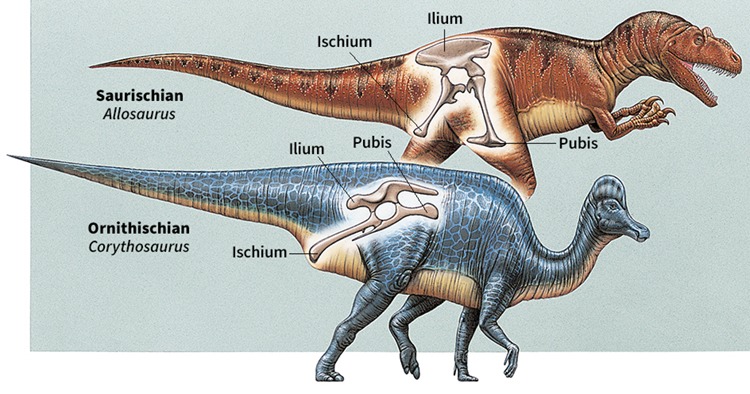
Fig. 5- Comparison of Dinosaur Two Main Branches. (Source: Obscure Dinosaur Facts)
Evolution of Dinosaurs
The main branches are the Saurischian dinosaurs and the Ornithischian dinosaurs.
The Saurischians had their pubic bone forward, although earlier species that were not dinosaurs, such as the Pterosaurs, which are reptiles with the ability to fly, also had it. Birds evolved from the Saurischians, despite having a pubic bone similar to the Ornithischians.
Now in the case of the Ornithischian, yes, it’s a feature that evolved in them. They have their pubic bone turned backwards. These differences allowed for better locomotion for each group of dinosaurs. Since the connection between the muscles and the pubis was different. Another difference is that the Ornithischians evolved and some of them became facultative quadrupeds. While the Saurischians have both bipeds and quadrupeds specimens.
The 3 Main Branches Of Dinosaurs
Within the Saurischians we have the Sauropods, which are the largest dinosaurs of them all, herbivores. And the Theropods, carnivorous dinosaurs, birds are here! They are theropods.
As for the Ornithischians, there are several groups. The Triceratops, Stegosaurus, Ankylosaurs, among others, are all representatives of this large group.
It’s worth noting that evolution doesn’t create species directly. It takes several years for species to form. So it’s normal for there to be transitional phases. For example, sauropods that were still bipeds, omnivorous Ornithischians, as well as omnivorous theropods. Over time, the species became more specialized and had a more specialized diet.
While in the early stages, especially after extinction, species tend to be generalists, to take advantage of all available food. So there will be exceptions to what I’m saying, but I’ve represented the general rule here.
Ornithischians had hard parts on their bodies, called osteoderms. These served to protect them. Ankylosaurs, triceratops and stegosaurus had these characteristics.
Sauropods, as they evolved, began to have a narrower and smaller face, but a larger neck. Until they reached their largest representative at the time of this writing, the Argentinosaurus. They specialized in feeding on medium to large trees, and due to their enormous size, they had no predators in their adult stages.2
Theropods
The most famous group, the Theropods, represent carnivorous dinosaurs, with sharp teeth and a narrow face, bipedal, sharp claws with a shorter first toe and an astragalus towards the front of the tibia, the latter being a unique feature of the Saurischia. Another characteristic is the hollow bones, something unique only to this group. Probably to reduce the weight of their skeleton, the united clavicle is another characteristic of Theropods. These were the predators of the time, including the Spinosaurus, Giganotosaurus and the infamous T. rex.
Although there are larger representatives than the T. rex, this was still the biggest carnivorous dinosaur discovered. Since it has more muscles than the others, it becomes heavier.
Feathers of Dinosaurs?
Birds are Theropods, and nowadays are considered avian dinosaurs. Yes, birds are dinosaurs, and you can see them from your window at home. And if you don’t believe me, look at the similarities. They are the last dinosaurs alive in our planet.
Sharp beak and narrow face, legs with sharp claws used for hunting with the shortest 1st toe, hollow bones to reduce weight. The entire hind leg is never completely on the ground. Birds‘ feathers are also characteristics that emerged with the dinosaurs.
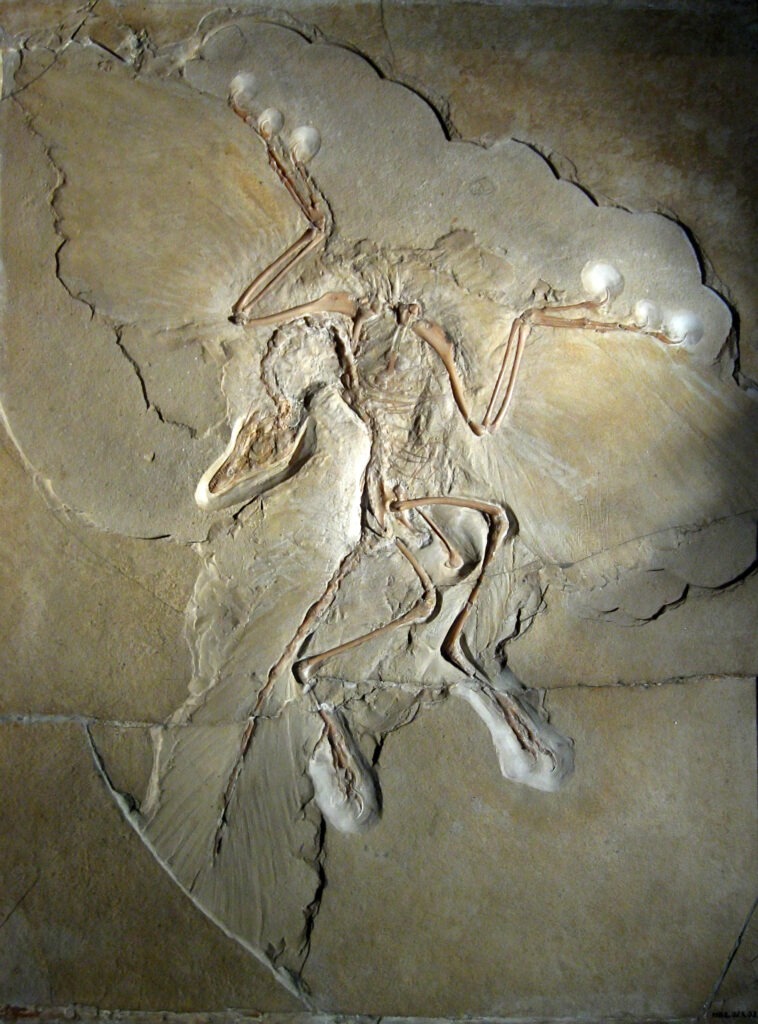
Fig- 6- Archaeopteryx. A transitional fossil between dinosaurs and birds. It had sharp claws, feathers, but it had teeth as well. (Source: Wikipedia)
Velociraptors, very famous in the Jurassic Park trilogy films, also had feathers, making them very different from the ones we see in the movies.
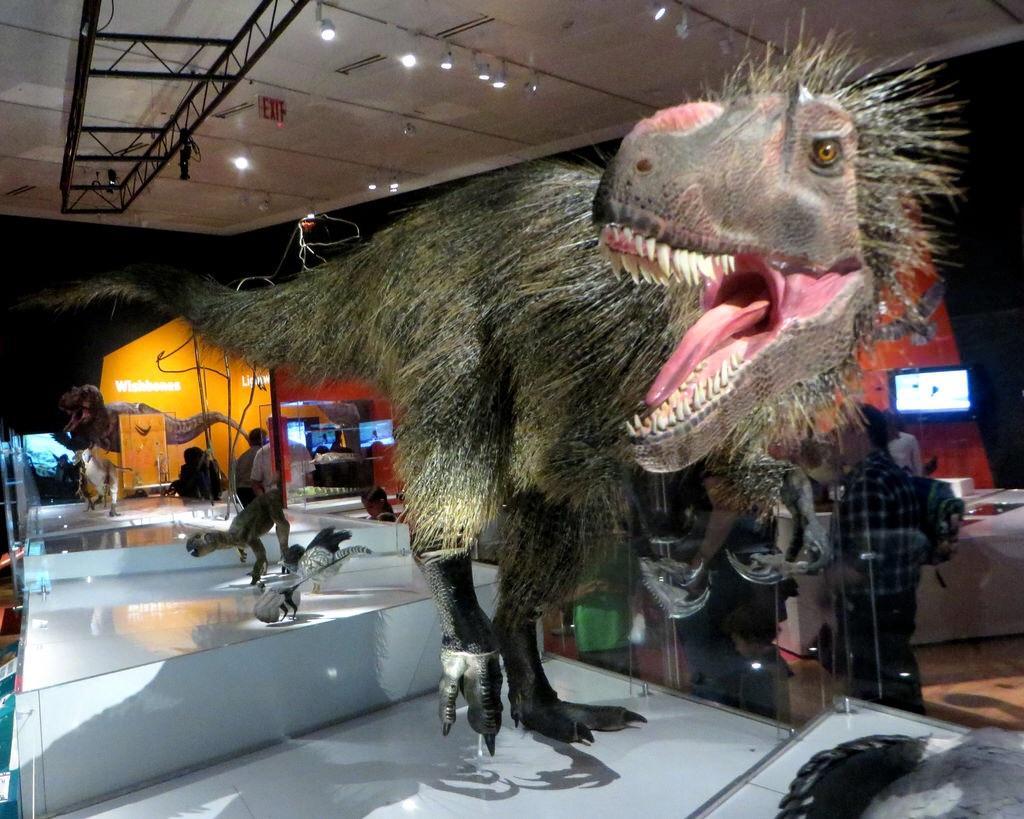
Fig. 7- Yutyrannus, a tyrannosaur with feathers. The largest feathered specimen ever discovered. (Source: American Museum of Natural History)
Extinction
Although there are many theories, which have been created over the decades, the most reliable is that of the meteorite that extinguished the non-avian dinosaurs. The discovery of the Chicxulub crater on the Yucatán peninsula dates back exactly to the age when the dinosaurs became extinct.
Despite the strong impact, and the fact that it was the second biggest mass extinction that life on Earth has ever witnessed, dinosaurs were not completely wiped out. Avian dinosaurs, smaller at the time, managed to escape extinction, probably because they could hide and needed less food to survive. While the bigger representatives of the dinosaurs became extinct. It should be noted that extinction doesn’t happen overnight. The impact of the asteroid changes several variables that turn life on Earth around completely, which caused a mass extinction.
Life on Earth recovered after the death of the dinosaurs. And without them as the dominant force, it was time for another group of animals to dominate the Earth’s environment. Their name? The mammals.
You can read more about this topic in the list of articles below.
Common Mistakes
After all this text, we have some new knowledge about dinosaurs. But we still often have doubts about it. This part of the article is really to explain and dispel some of those doubts.
When you watch films about this era, you realize how fascinating these animals are. But that, you already know that. The big confusion comes especially about which animals are or are not dinosaurs. All dinosaurs have unique characteristics that allow them to be included in this group.
But this creates doubts, especially when the species are on a fine line, because they have characteristics that can be considered dinosaurs. Especially the transitional species to dinosaur come into play here, as they have transitional characteristics. The question that remains is, can these be considered dinosaurs already? This is a common question and one that can confuse many people, in fact there are many species already discovered that have these mixed characteristics.
But what I want to talk about in this section is not so much about which species fall along this fine line, I want to talk specifically about which species are often confused as dinosaurs.
They Are Not Dinosaurs
One of the most famous organisms in dinosaur films is the incredible Mosasaurus, which appears to be bigger than Titanic. Despite their exaggerated size and the fact that these creatures are huge, and that they were alive at the same time that dinosaurs inhabited the Earth, they are not dinosaurs. They are simply marine reptiles and don’t have any unique features, such as lower limbs under their bodies. The same can be said of Plesiosaurus.
Another interesting organism is Dimetrodon, another very famous specimen, which appeared just before the Mesozoic era. Well, this majestic animal isn’t a dinosaur either, it only has 1 fenestra behind the orbital, being a Synapsid. Making it closer to mammals than to Dinosaurs in evolutionary terms.
Pterosaurs
Finally, the Pterosaurs, yes, they’re not dinosaurs either. Unfortunately, these are flying reptiles that don’t fall into the Dinosaur category, even though they inhabited the Earth during the Mesozoic. They have characteristics that make them different from Dinos. For example, their acetabulum was closed, not open like the dinosaurs, and they had wings made of skin (membranes) rather than feathers like birds. They had one giant finger that created the entire wing, unlike all dinosaur species.
Finally, the structure of some of the bones is also different from dinosaurs, but it should be noted that these are very close cousins of the Dinosaurs and are still very interesting creatures.
In conclusion, yes, all of today’s birds are dinosaurs. There are characteristics in all of them that show a clear evolution from the non-avian dinosaurs of the Mesozoic era. Although the differences are very significant when we look at the cover, inside, anatomically, they show characteristics that have been inherited and maintained over all these years.
Thank you for reading. If you’re curious and want to learn more, go to the “articles” section. Every week there are new articles published and new curiosities, stay tuned! Subscribing to our Newsletter will notify you when a new article drops.
Footnotes
- This information was taken from the Paleontologist Pirulla ↩︎
- Sander, P. M., Christian, A., Clauss, M., Fechner, R., Gee, C. T., Griebeler, E. M., … & Witzel, U. (2011). Biology of the sauropod dinosaurs: the evolution of gigantism. Biological Reviews, 86(1), 117-155. ↩︎
All Dinosaurs Articles
Here you can learn about eveything dinosaur related! Check constantly for updates! Enjoy the world of Dinosaurs!
All Topics
